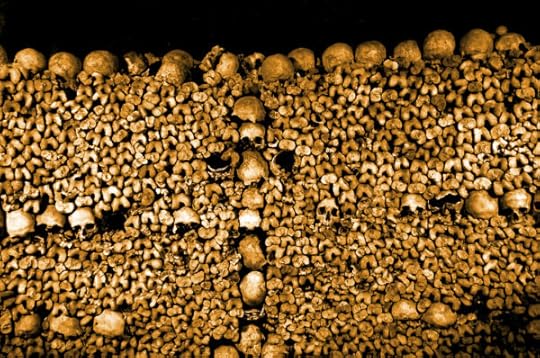Halloween en Français
Ont un Halloween Heureux! That’s what I’d like to say, since heureux co-mingles nicely with horreur in the ear, but Joyeux Halloween! is probably correct. Meanwhile, you can learn a little here about Halloween in the French style. I hope I’ve given you sufficient vocabulary. Vous serez surpris de voir à quel point beaucoup français vous savez déjà.
Par exemple, ici, c’est le tombeau de Delacroix au cimetière du Père Lachaise.
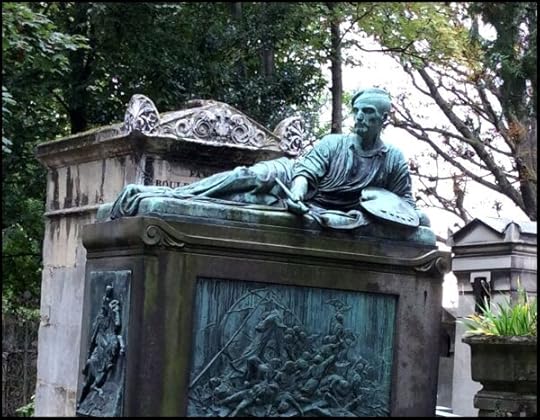
Halloween is not a French holiday, but they’ve adopted it so les petits enfants can put on classic déguisements and get some bonbons. Perhaps your jeune fille would like to be a zombie?
C’est le même mot en anglais ou en français.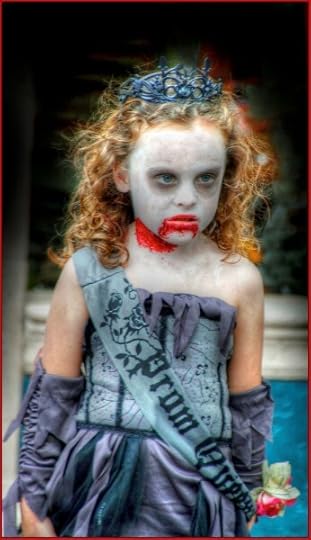 Dark Child by psyberartistHalloween is not a French holiday, but they’ve adopted it so les petits enfants can put on classic déguisements and get some bonbons. But the French have their own Day of the Dead, though it is far more somberly celebrated than in Mexico. November 1st is La Toussaint, or All Saint’s Day. Les cimetières are visited and chrysanthèmes left on the graves in magnificent displays praised as worthy of tourist visits.
Dark Child by psyberartistHalloween is not a French holiday, but they’ve adopted it so les petits enfants can put on classic déguisements and get some bonbons. But the French have their own Day of the Dead, though it is far more somberly celebrated than in Mexico. November 1st is La Toussaint, or All Saint’s Day. Les cimetières are visited and chrysanthèmes left on the graves in magnificent displays praised as worthy of tourist visits.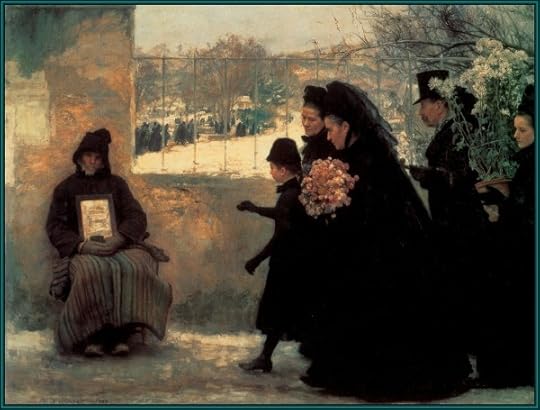
I’ve read that if you are ever invited to an automne dinner by a French family, you should not horrify your hostess by presenting her with a bouquet of chrysanthemums. Since one can find images of this lovely autumnal flower looking cheerful in vases, I can’t attest to the accuracy of this warning. More research is needed.
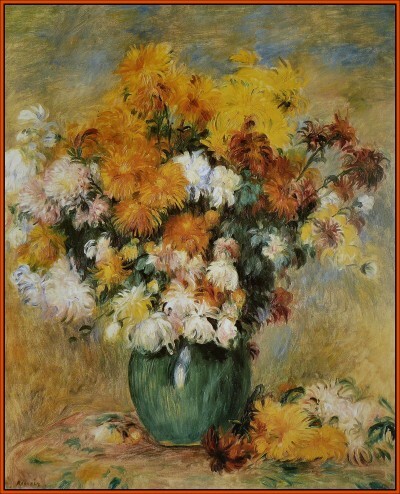 Bouquet of Chrysantemums by RenoirHowever, I have assured myself that there will be a tarte à la citrouille, perhaps served by the light of un bougie. I saw many delicous recipes on the internet. One called for roasting the pumpkin first. Fascinating.
Bouquet of Chrysantemums by RenoirHowever, I have assured myself that there will be a tarte à la citrouille, perhaps served by the light of un bougie. I saw many delicous recipes on the internet. One called for roasting the pumpkin first. Fascinating.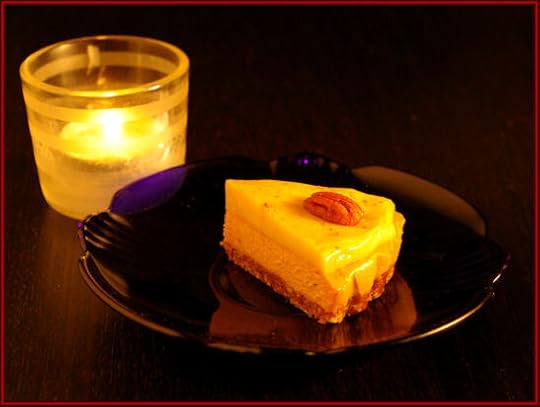 Pumpkin pie by candlelight. Photo from freshtopia.net
Pumpkin pie by candlelight. Photo from freshtopia.netBougie? I searched and found that this “wax candle” comes from Bugia, a town in Algeria with an ancient wax trade. Odd that bougie conjures Boogey(man), though not, in this case, boogie. According to Wikimedia: “The French equivalent of the Bogeyman is le croque-mitaine (“the mitten-biter” or rather “the hand-cruncher”, mitaine means mitt in an informal way).” Isn’t it very Russian to have a diminutive longer than the word? Apparently the Bogeyman is usually a deliberately vague and faceless personification of terror, and the same goes for the French version. There were no illustrations of a demonic figure crunching or munching gloved hands. I went in search of an image from one of those old Hollywood movies with crawling hand searching out a victim to throttle. No luck. I did find a lady in black leather “bondage mittens.” A bit kinky for this post? Then I found this “crime scene” photo. Rather too perfect to be real, and no mittens, but it’s quite striking.
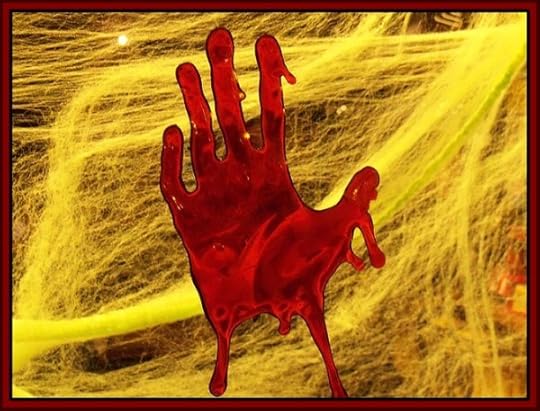 Original photo by JRLibby
Original photo by JRLibbySo if French bougies come from Bugia, wence cometh candles? According to the online Etymology Dictionary: “Old English candel “lamp, lantern, candle,” an early ecclesiastical borrowing from Latin candela “a light, torch, candle made of tallow or wax,” from candere “to shine,” from PIE root *kand- “to glow, to shine, to shoot out light” (cf. Sanskrit cand- “to give light, shine,” candra- “shining, glowing, moon;” Greek kandaros “coal;” Welsh cann “white;” Middle Irish condud “fuel”).”
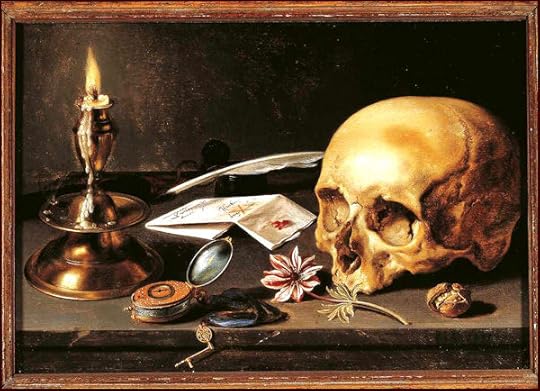 Vanitas by Pieter Claeszoon
Vanitas by Pieter ClaeszoonAnd not only that! “Candles were unknown in ancient Greece (where oil lamps sufficed), but common from early times among Romans and Etruscans. Candles on birthday cakes seems to have been originally a German custom. To hold a candle to originally meant “to help in a subordinate capacity,” from the notion of an assistant or apprentice holding a candle for light while the master works. To burn the candle at both ends is recorded from 1730.”
But back to Halloween… There are the usual costume possibilities. Various monstres are as popular there as they are here. Le Diable is always present. Terrifiants fantômes hanter le monde. Paris lays claim to one of the most famous fantômes.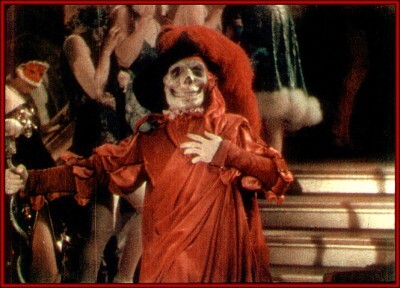 Phantom of the OperaIn 1884, this fashionable outfit was suggested if you wanted to be une sorcière. She does not wear a masque, but she does hold un balai.Elle a deux familiers. Un petit hibou perché sur son chapeau, et un chat noir rideaux ses épaules.
Phantom of the OperaIn 1884, this fashionable outfit was suggested if you wanted to be une sorcière. She does not wear a masque, but she does hold un balai.Elle a deux familiers. Un petit hibou perché sur son chapeau, et un chat noir rideaux ses épaules.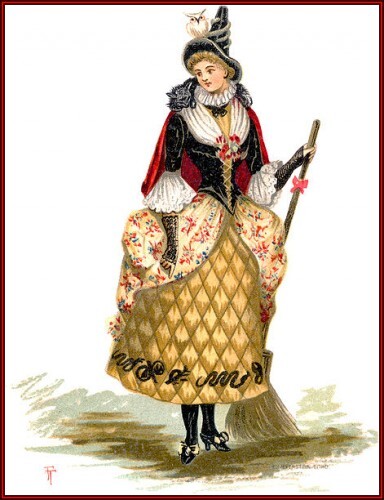 a witchToutefois, ce chat noir beau est beaucoup plus célèbre.Il est le véritable symbole de la Butte Montmartre et la fin du siècle.
a witchToutefois, ce chat noir beau est beaucoup plus célèbre.Il est le véritable symbole de la Butte Montmartre et la fin du siècle.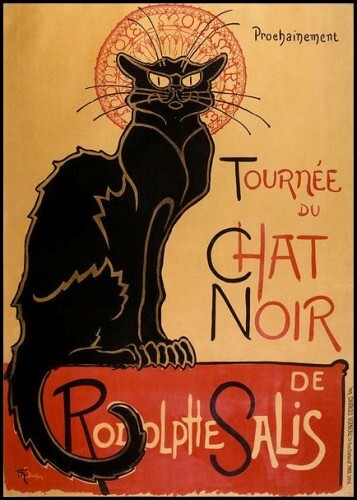 Vampires et autres créatures de la nuit, font leur apparition sur la scène.
Vampires et autres créatures de la nuit, font leur apparition sur la scène.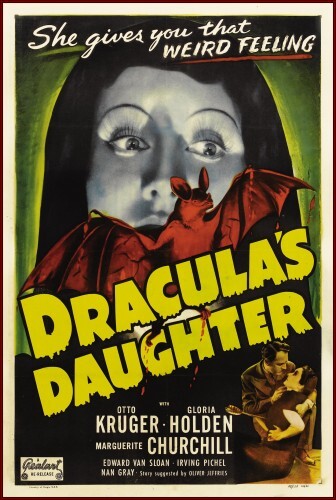 Old movie poster
Old movie poster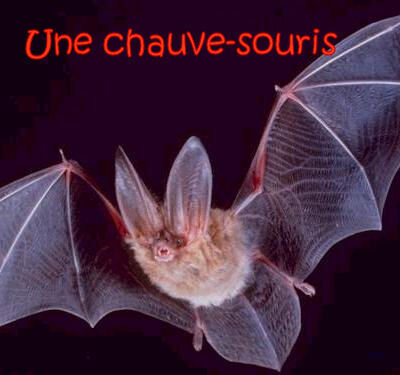 a batUne autre créature renvoyée par le royaume de la mort est la momie.
a batUne autre créature renvoyée par le royaume de la mort est la momie.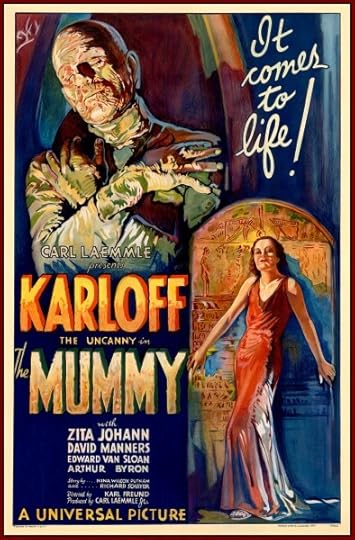 Classic cinema posterOr perhaps, you could design a chapeau avec un lutin, as in this strange illustration.
Classic cinema posterOr perhaps, you could design a chapeau avec un lutin, as in this strange illustration.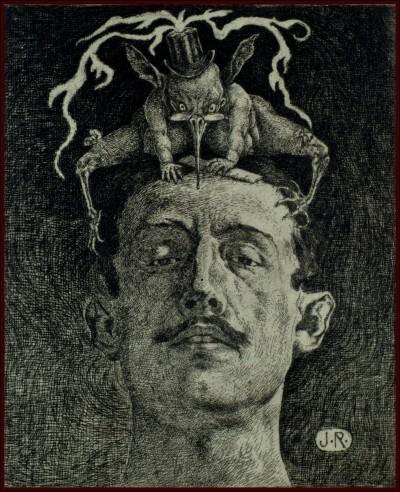 Man pecked by the goblin of criticism.What other French words might you need for a proper Halloween? Here’s an new one for me: un feu follet for a Jack O’Lantern.
Man pecked by the goblin of criticism.What other French words might you need for a proper Halloween? Here’s an new one for me: un feu follet for a Jack O’Lantern.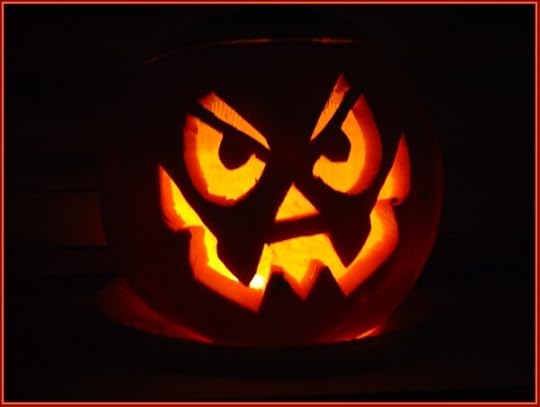 Citroulle préparée pour Halloween by Carol Pasquier.Also new and strange is un épouventail is a scarecrow.
Citroulle préparée pour Halloween by Carol Pasquier.Also new and strange is un épouventail is a scarecrow.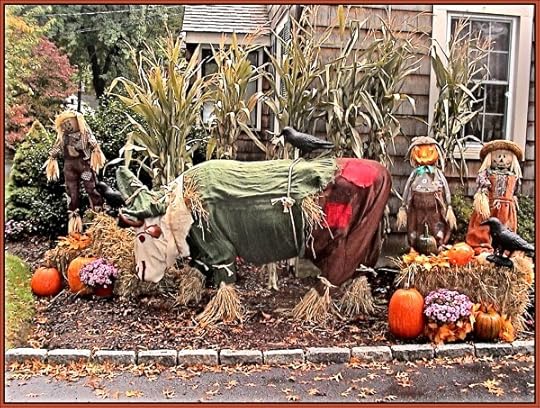 Gladys as a Scarecrow from James.lenbinskiFor creepiness, we must needs have a creepy crawly critter.
Gladys as a Scarecrow from James.lenbinskiFor creepiness, we must needs have a creepy crawly critter.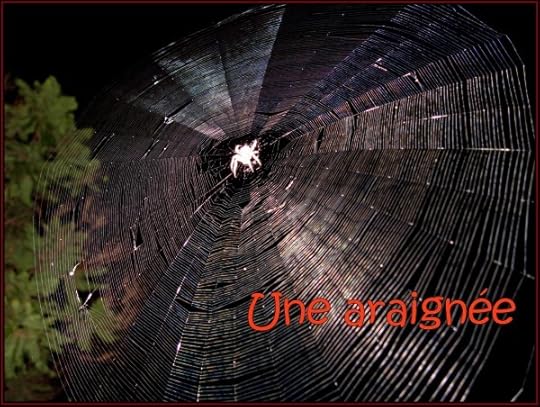 A spider in its web. Photo by Micael HartlAnd finally, a skeleton.Most versatile, this mummified couple could be a zombie duo, or Death on a mount.He holds a link to les catacombs. What better trip to take on Halloween?
A spider in its web. Photo by Micael HartlAnd finally, a skeleton.Most versatile, this mummified couple could be a zombie duo, or Death on a mount.He holds a link to les catacombs. What better trip to take on Halloween?
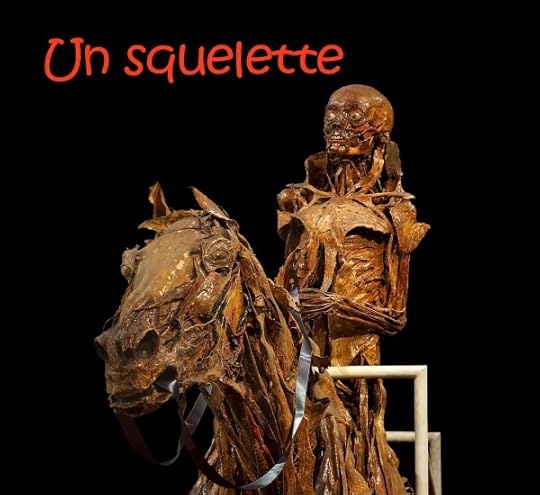 Photo by Jebulon
Photo by Jebulon
If you wanted a creepy experience in the era of my novels, you could visit Cabaret du Néant, of nothingness, and be treated to a body dissolving in a coffin. You could enter the coffin yourself, if you chose.
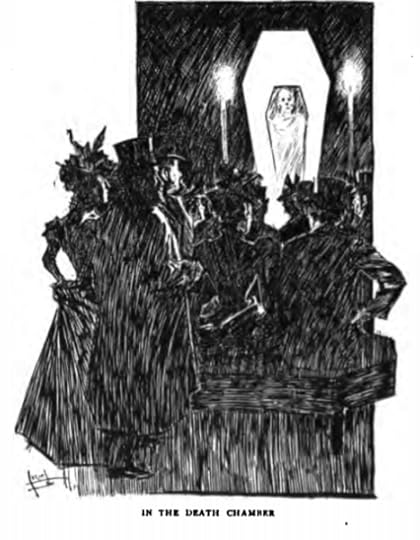 Illustration by W. C. Morrow
Illustration by W. C. Morrow
For continued creepiness, go to my website and visit les catacombes – just click on this image.

